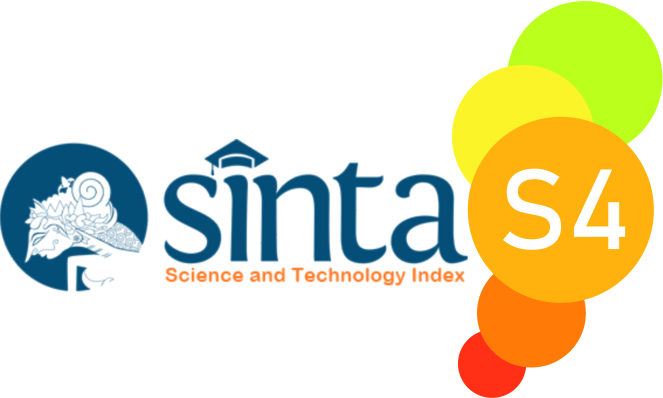Assessment Principles and Practices Quality Assessments in A Digital Age
 ), Sunimaryanti Sunimaryanti(2), Lesis Andre(3),
), Sunimaryanti Sunimaryanti(2), Lesis Andre(3), (1) STITNU Sakinah Dharmasraya
(2) STITNU Sakinah Dharmasraya
(3) STITNU Sakinah Dharmasraya
 Corresponding Author
Corresponding Author
DOI : https://doi.org/10.24036/spektrumpls.v9i2.112711
Full Text:
 Language : en
Language : en
Abstract
Keyword: Assessment Principles, Practices Quality Assessments, Digital Age
References
Angus, S.D. and Watson, J. (2009) 'Does regular online testing enhance student learning in the numerical sciences? Robust evidence from a large data set'. British Journal of Educational Technology, 40 (2), pp. 255-272.
Arter, J., & McTighe, J. (2001). Scoring rubrics in the classroom: Using performance criteria for assessing and improving student performance. Thousand Oaks, CA: Corwin Press, Inc.
Baratz-Snowden, J. (1993), “Assessment of Teachers: A View from the National Board for Professional Teaching Standards”, Theory into Practice, 32(2): pp. 82-85.
Bennett, R. E. (2002) 'Inexorable and Inevitable: The Continuing Story of Technology and Assessment'. Journal of Technology, Learning and Assessment, 1 (1). Online journal article retrieved from http://ejournals.bc.edu/ojs/index.php/jtla/article/view/1667/
Biggs, J. (2003), “Aligning Teaching and Assessing to Course Objectives”, paper presented at the International Conference on Teaching and Learning in Higher Education: New trends and Innovations, University of Averio (13-17 April 2003). Available online at: http://event.ua.pt/ Iched
Brown, H. D. (2001). Teaching by Principles: An Interactive Approach to Language Pedagogy. Second Edition. New York: Pearson Education.
Brown, H. D. (2004). Language Assessment: Principles and Classroom Practices. New York: Pearson Education
Efendi, Z., Usman, B., & Muslem, A. (2017). Implementation of portfolio assessment in teaching English. English Education Journal (EEJ), 8(2), 187–198.
JISC (2010). Effective Assessment in a Digital Age. A JISC report. Available from
ps://facultyinnovate.utexas.edu/sites/default/files/digiassass_eada.pdf
JISC (2010). The future of assessment: five principles, five targets for 2025. Available from
Future of Assessment report (jisc.ac.uk)
Lucas, R. I. G. (2007). Portfolio assessment a study on p portfolio-evaluation scheme as an effective student self. The Asia Pacific-Education Researcher, 16(1), 23– 32.
McMillan, James H. (2000) "Fundamental Assessment Principles for Teachers and School Administrators," Practical Assessment, Research, and Evaluation: Vol. 7 , Article 8. DOI: https://doi.org/10.7275/5kc4-jy05 Available at: https://scholarworks.umass.edu/pare/vol7/iss1/8
McCracken, J., Cho, S., Sharif, A., Wilson, B., and Miller, J. (2012), “Principled Assessment Strategy Design for Online Courses and Programs”, Electronic Journal of e-Learning, 10(1): pp.107-119. Available at shttp://files.eric.ed.gov/fulltext/EJ969449.pdf
Pellegrino, J. W. & Quellmalz, E.S. (2010) 'Perspectives on the Integration of Technology and Assessment'. Journal of Research on Technology in Education, 43 (2), pp. 119-134.
Rouxelle de Villiers, Joanna Scott-Kennel, and Roy Larke. (2016). Principles of Effective E-Assessment: A Proposed Framework. Journal of International Business Education 11: 65-92
Schwartz, D.L. & Arena, D. (2009) Choice-Based Assessments for the Digital Age. Stanford University. Available from: http://dmlcentral.net/sites/dmlcentral/files/resource_files/ChoiceSchwartzArenaAUGUST232009.pdf
Stevens, D. D., & Levi, A. J. (2005). Introduction to rubrics: An assessment tool to save grading time, convey effective feedback, and promote student learning. Sterling, VA: Stylus.
Syah, Darwin. Dkk. (2009). Perencanaan sistem Pengajaran Pendidikan Agama Islam. Cet. I; Jakarta Gaun Persada pres.
Tabatabaei, O., & Assefi, F. (2012). The effect of portfolio assessment technique on writing performance of EFL learners. English Language Teaching, 5(5), 138– 147.
Topping, K. J. (2009). Peer Assessment. Theory Into Practice, 48(1), 20-27
Whitelock, D., Ruedel, C. and Mackenzie, D. (2006) e-Assessment: Case Studies of Effective and Innovative Practice. Final report for JISC ITT funded project conducted by The Open University and University of Derby.
Whitelock, D. and Watt, S. (2008) 'Reframing e-assessment: adopting new media and adapting old frameworks'. Learning, Media and Technology, 33 (3), pp. 151-154
Wilson, M. (2006). Rethinking rubrics in writing assessment. Portsmouth, NH: Heinemann.
Winkley, J. (2010) E-assessment and innovation. A Becta report. Available from: emergingtechnologies.becta.org.uk
 Article Metrics
Article Metrics
 Abstract Views : 1635 times
Abstract Views : 1635 times
 PDF Downloaded : 382 times
PDF Downloaded : 382 times
Refbacks
- There are currently no refbacks.

This work is licensed under a Creative Commons Attribution-NonCommercial 4.0 International License.


